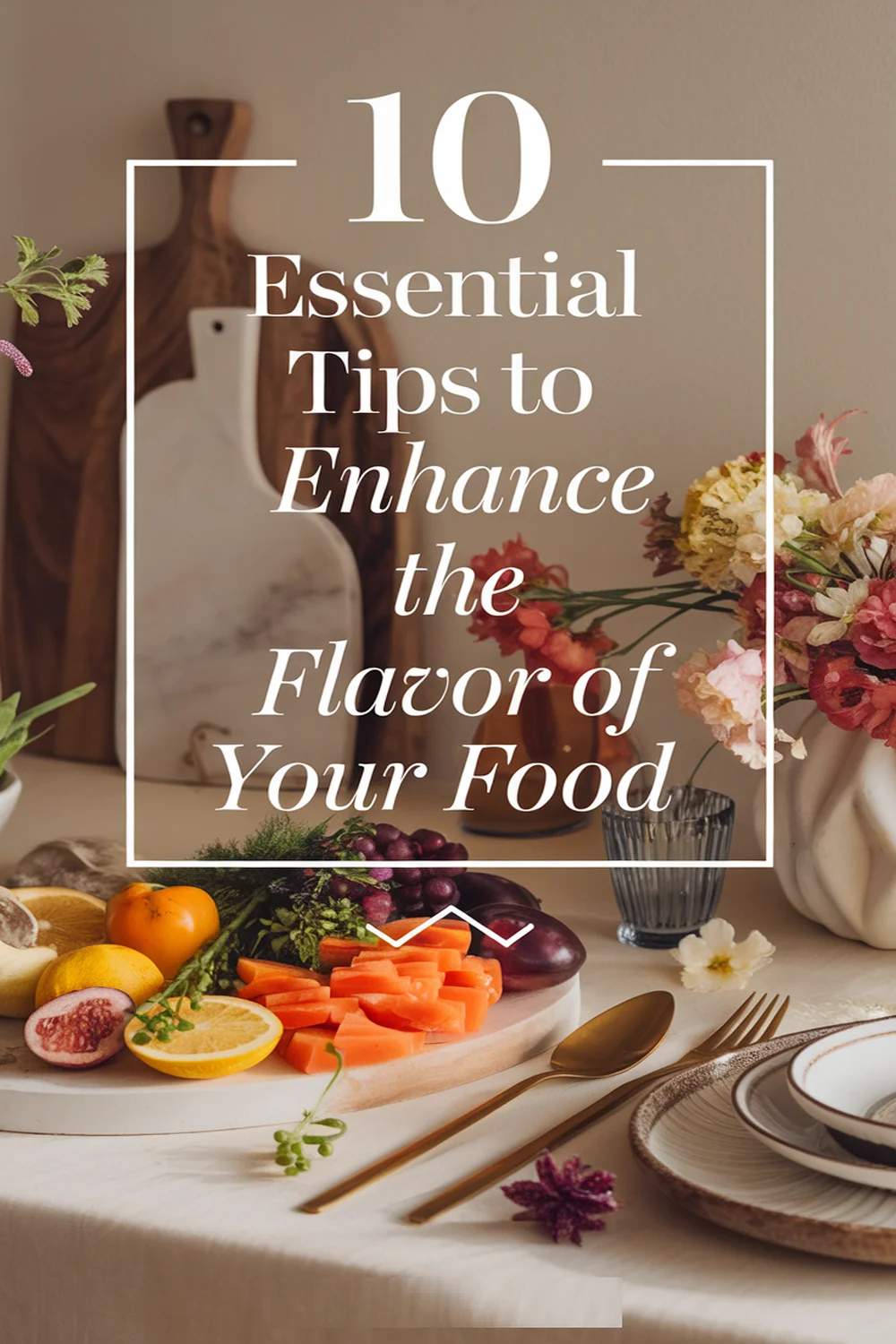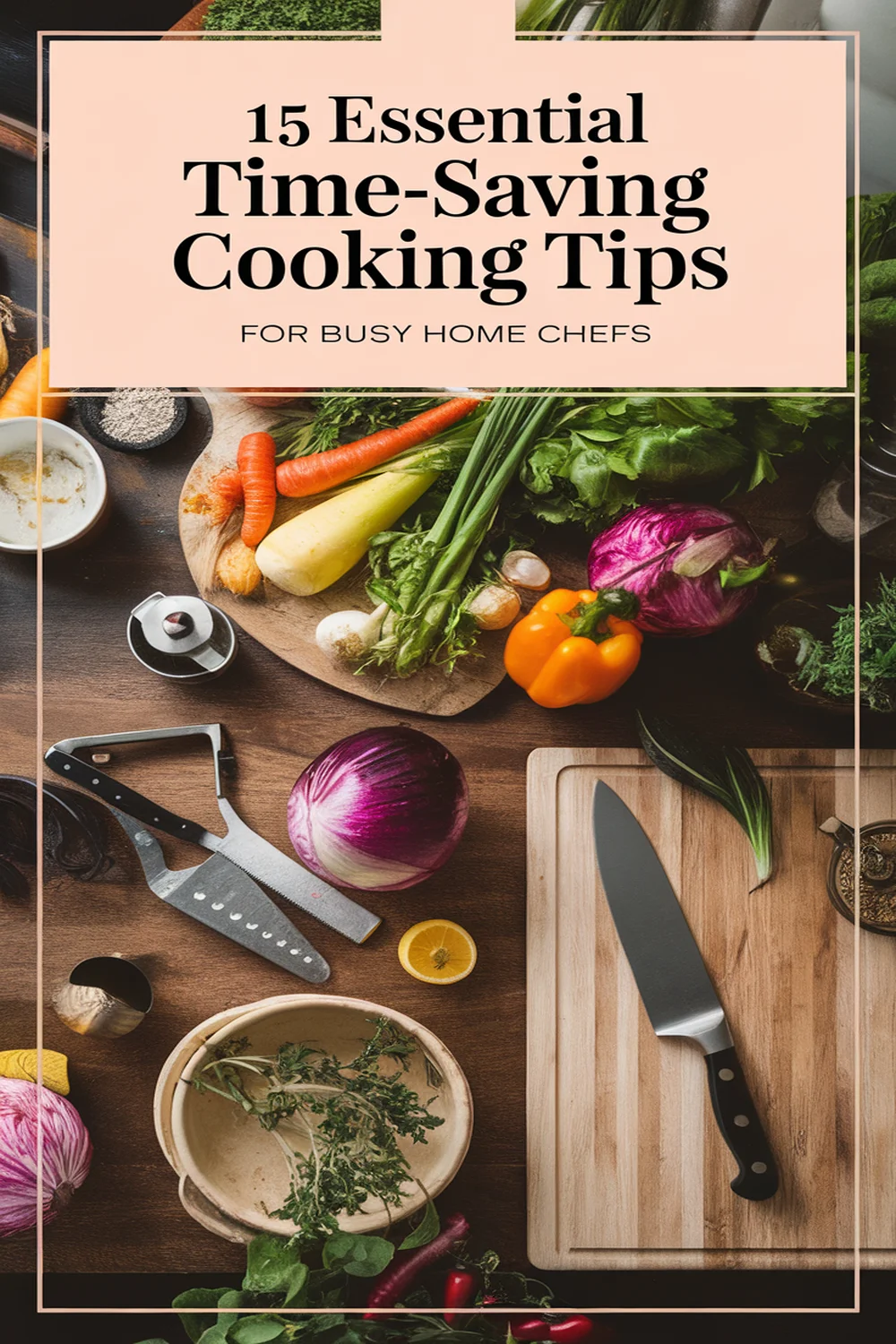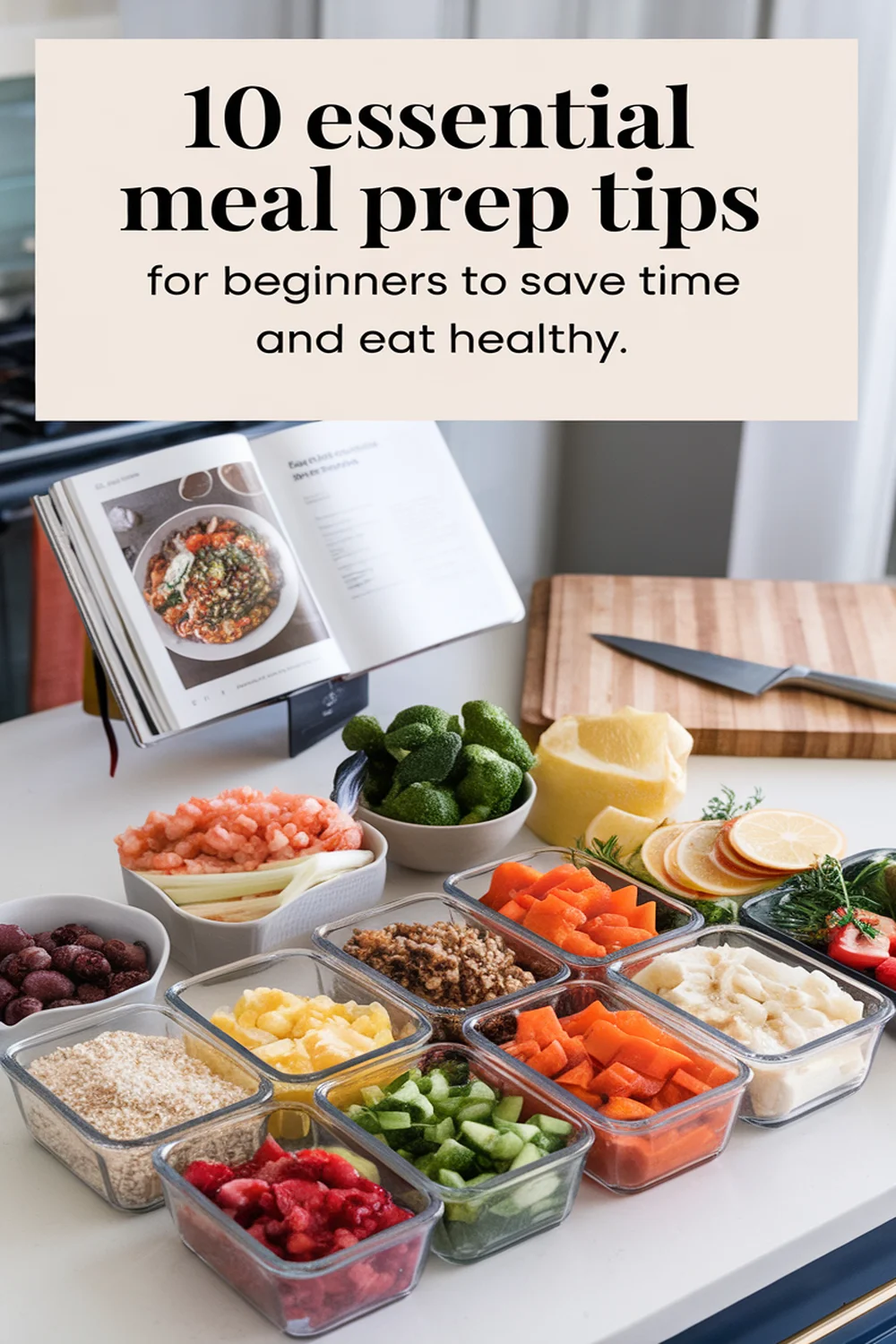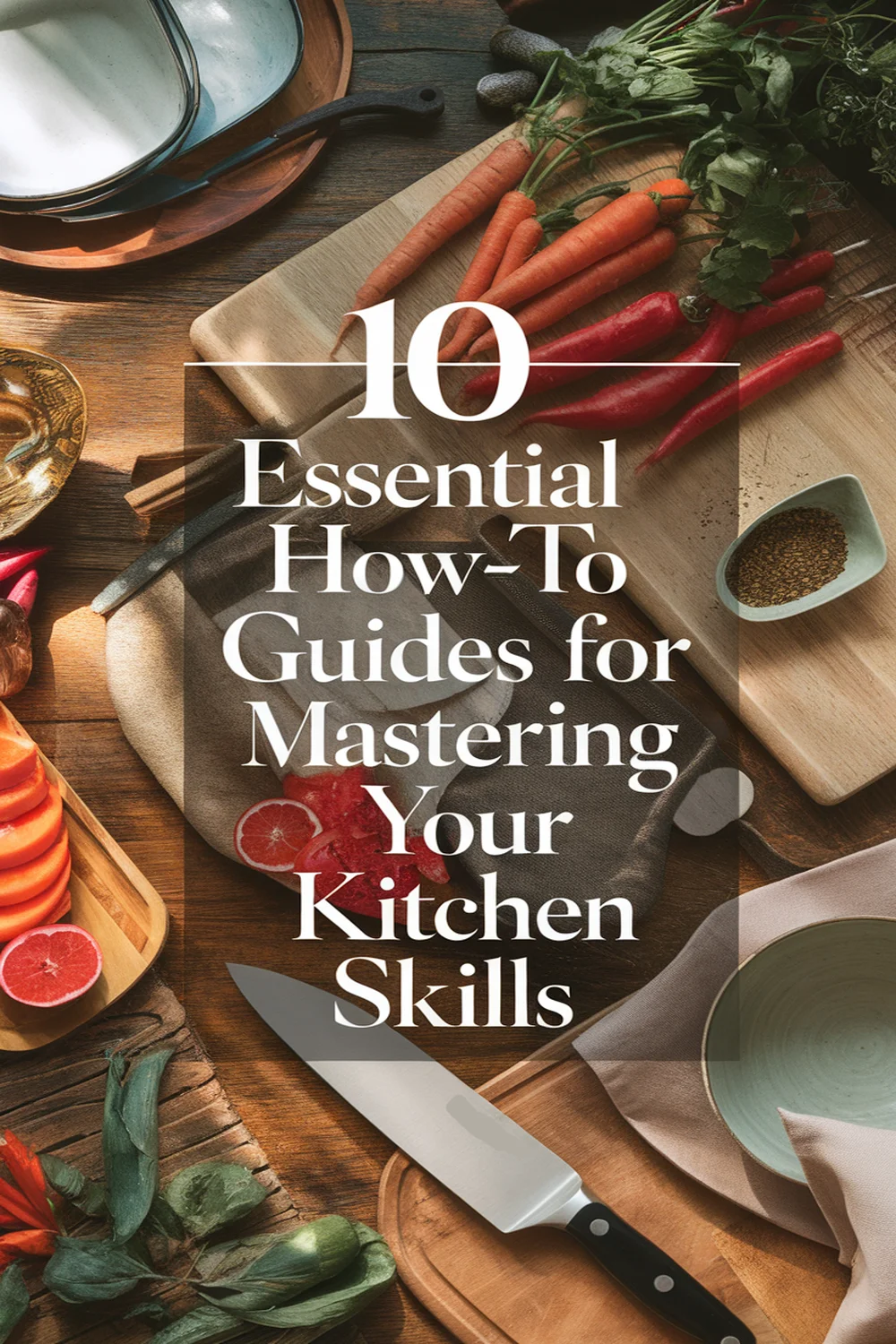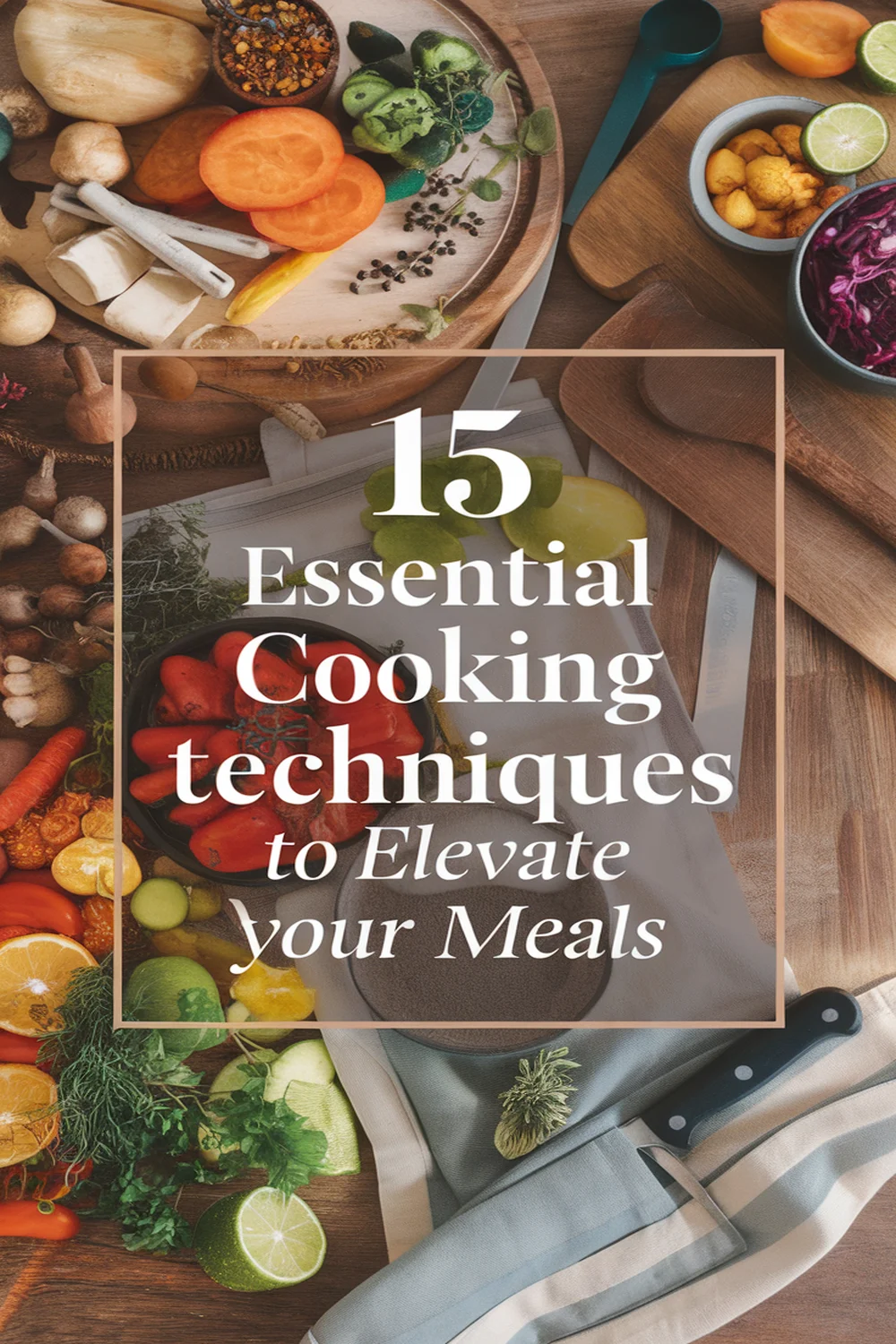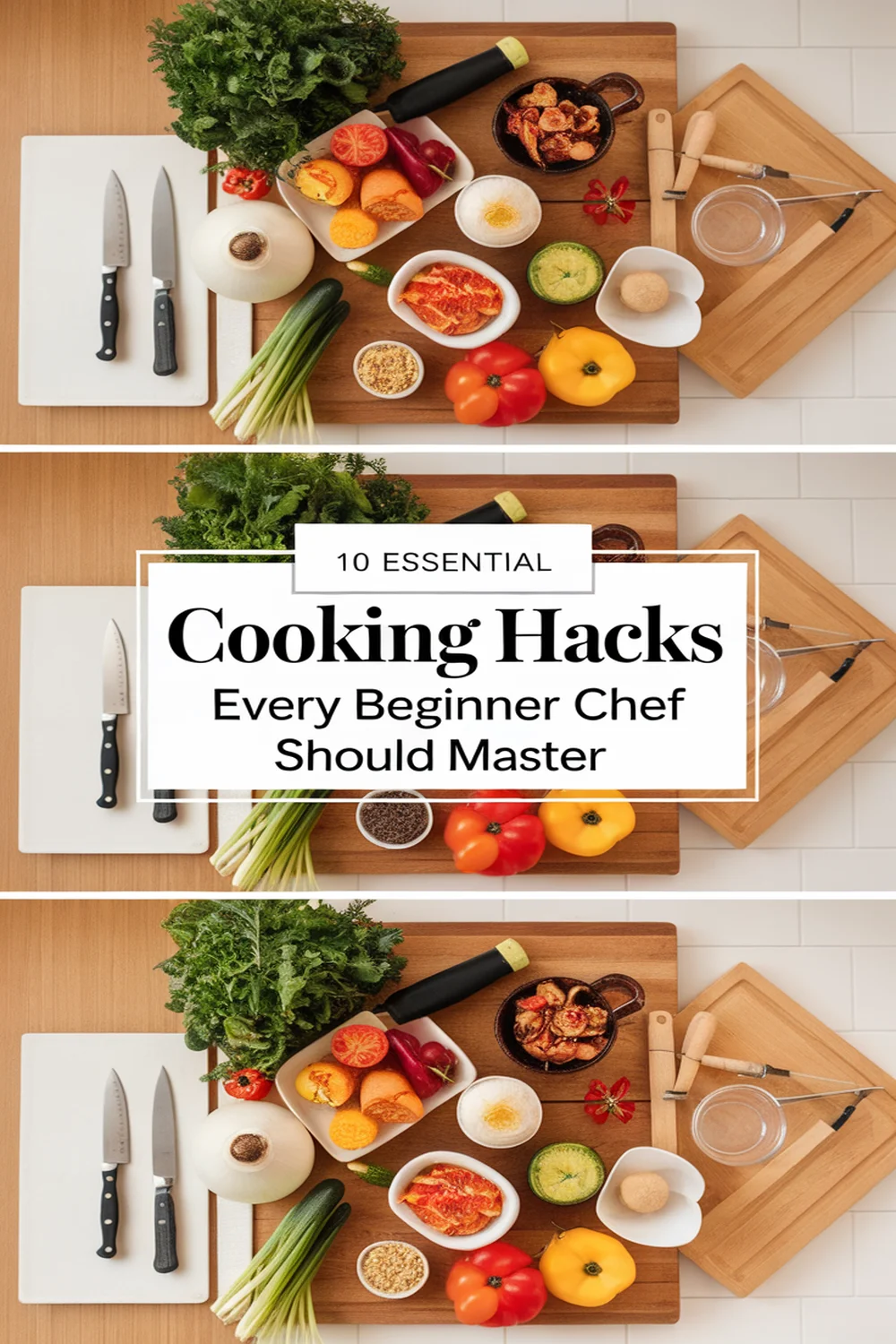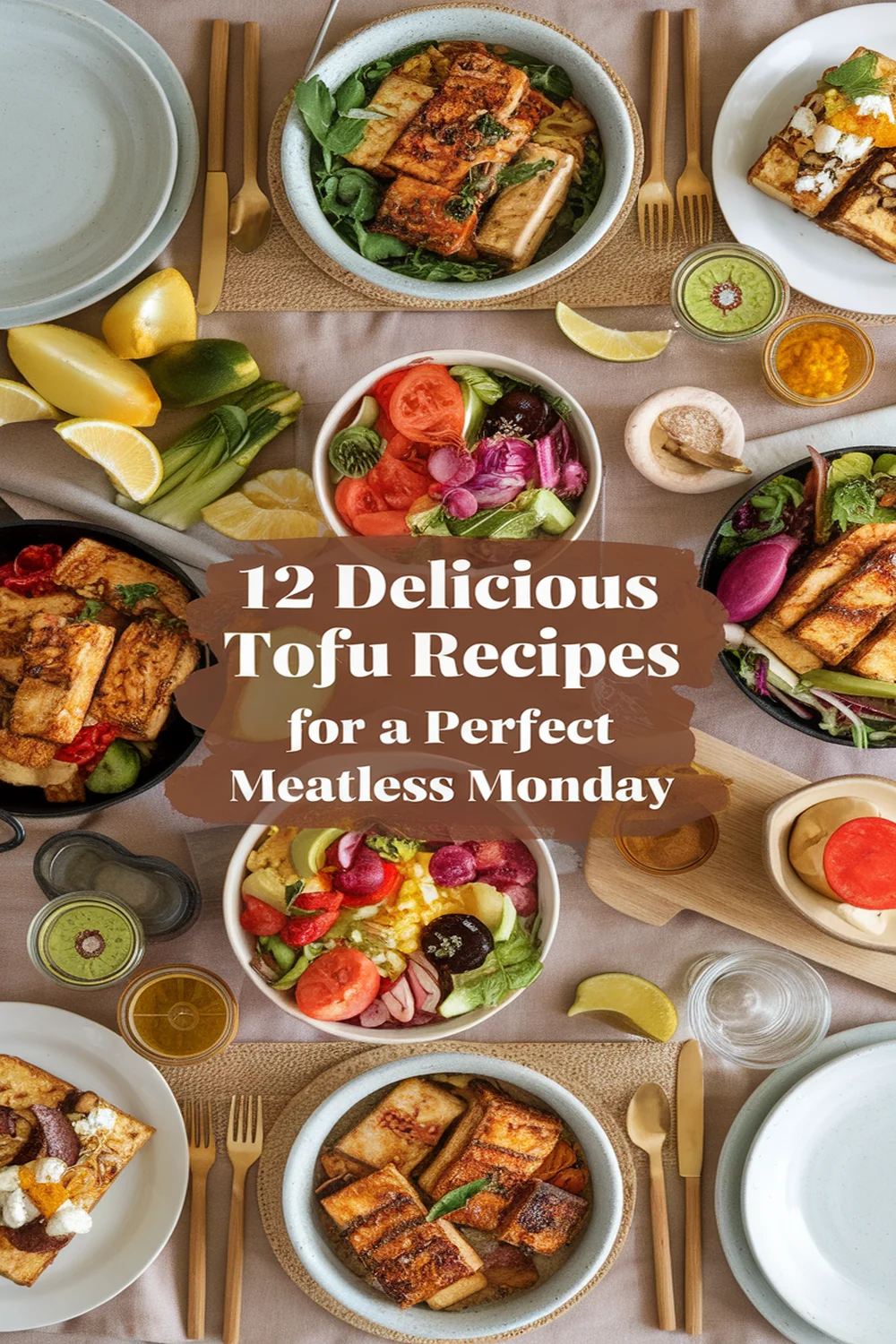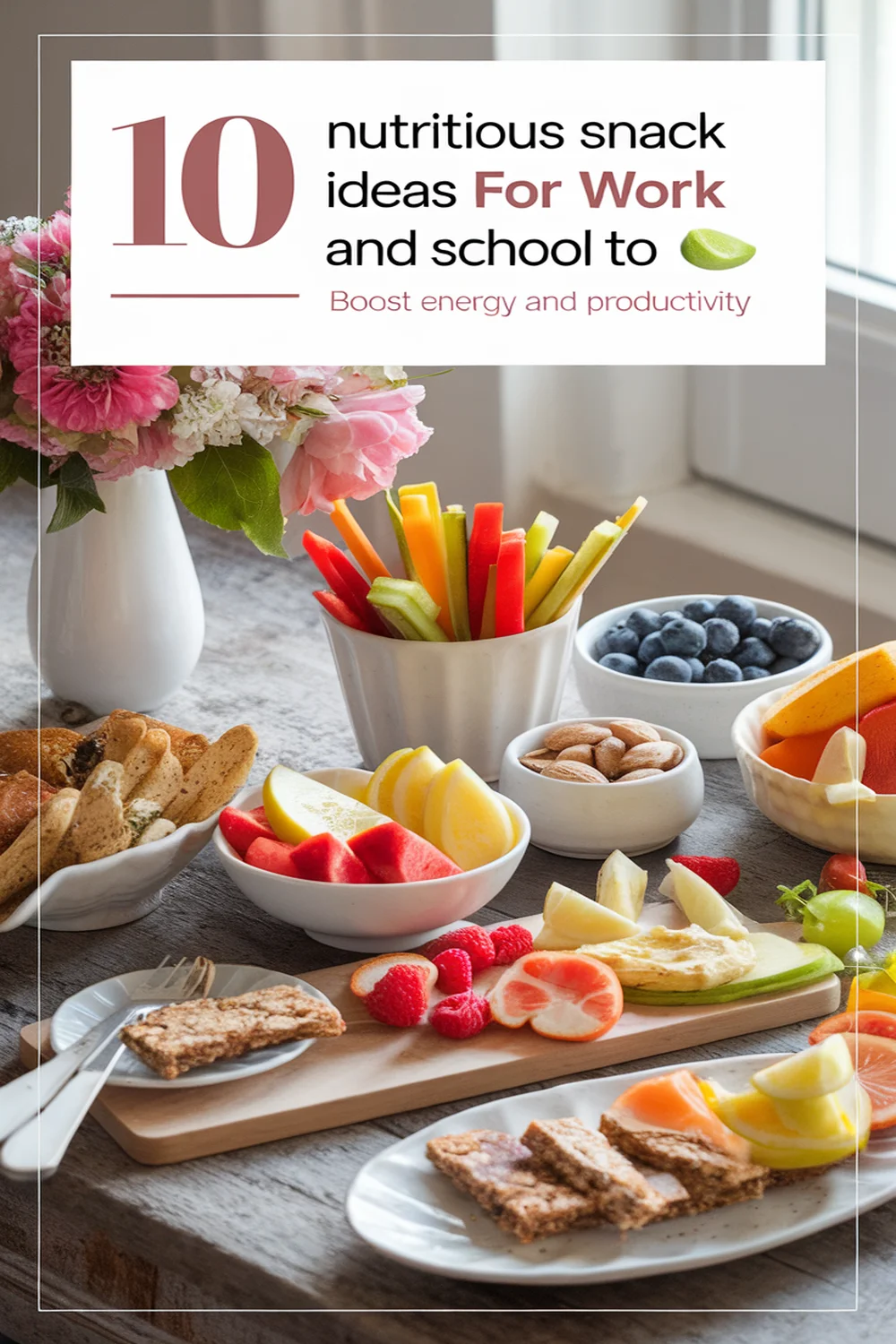This post may contain affiliate links. Please read our policy page.
To enhance the flavor of your food, start by using fresh herbs and spices to elevate dishes. Master the art of seasoning for balanced tastes, and don’t forget about umami-rich ingredients for savory depth. Experiment with marinades and rubs, and utilize high-quality fats to amplify flavors. Pay attention to texture, layer your flavors as you cook, and finish with flavor boosters like citrus or premium oils. There’s much more to explore to truly elevate your culinary creations.
Use Fresh Herbs and Spices
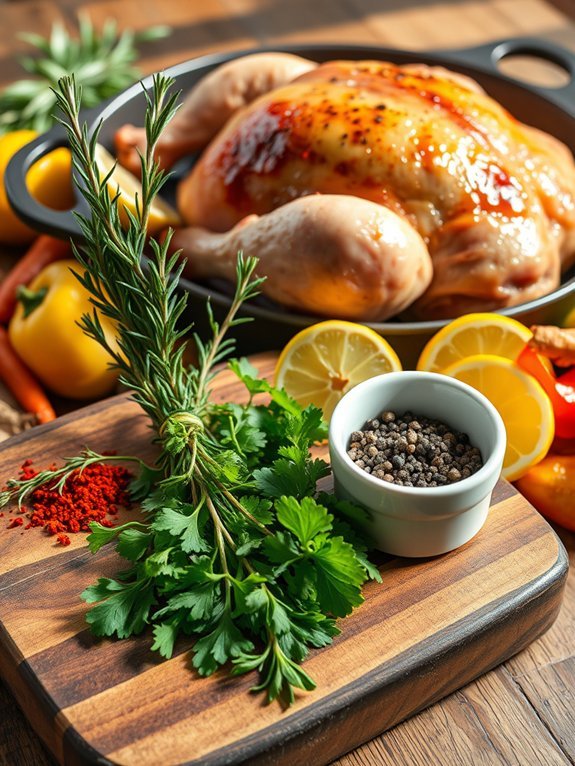
Fresh herbs and spices can transform a simple dish into a culinary masterpiece, bringing complexity and depth to the flavor profile. One of the best ways to showcase this is through a vibrant Herb and Spice Roasted Chicken. This dish not only highlights the aromatic qualities of fresh herbs but also introduces a variety of spices that complement the chicken beautifully. Whether it’s a Sunday dinner or a casual weeknight meal, this recipe guarantees a tender and juicy result that everyone will love.
To start, choose an assortment of fresh herbs such as rosemary, thyme, and parsley to create a flavorful marinade. The long, slow roasting of the chicken allows the herbs and spices to infuse their flavors into the meat, making each bite a burst of deliciousness. Pair it with seasonal vegetables to complete the meal, allowing their natural sweetness to balance the savory notes of the chicken.
Let’s explore the recipe!
- 1 whole chicken (about 4-5 lbs)
- 2 tablespoons olive oil
- 1 tablespoon fresh rosemary, chopped
- 1 tablespoon fresh thyme, chopped
- 1 tablespoon fresh parsley, chopped
- 4 cloves garlic, minced
- 1 teaspoon paprika
- 1 teaspoon salt
- 1/2 teaspoon black pepper
- 1 lemon, quartered
- 1 onion, quartered
- Assorted seasonal vegetables (carrots, potatoes, bell peppers)
Preheat your oven to 425°F (220°C). In a small bowl, whisk together the olive oil, chopped herbs, minced garlic, paprika, salt, and black pepper to create a marinade.
Pat the chicken dry with paper towels and rub the marinade all over the chicken, including under the skin for maximum flavor. Stuff the cavity with the quartered lemon and onion, then place the chicken in a roasting pan surrounded by the assorted vegetables. Roast for about 1 hour and 15 minutes, or until the chicken is golden brown and the internal temperature reaches 165°F (75°C). Let it rest for 10 minutes before carving.
When preparing this dish, consider the freshness of the herbs and spices you use; they can greatly impact the flavor quality. If fresh herbs aren’t available, dried herbs can be used but will require adjusting the quantities, as they’re more concentrated.
Always remember to taste and adjust the seasoning as you prepare the marinade to match your personal preference. Additionally, feel free to experiment by adding different spices or herbs based on what you have on hand, creating a unique flavor profile each time you make this dish.
Master the Art of Seasoning
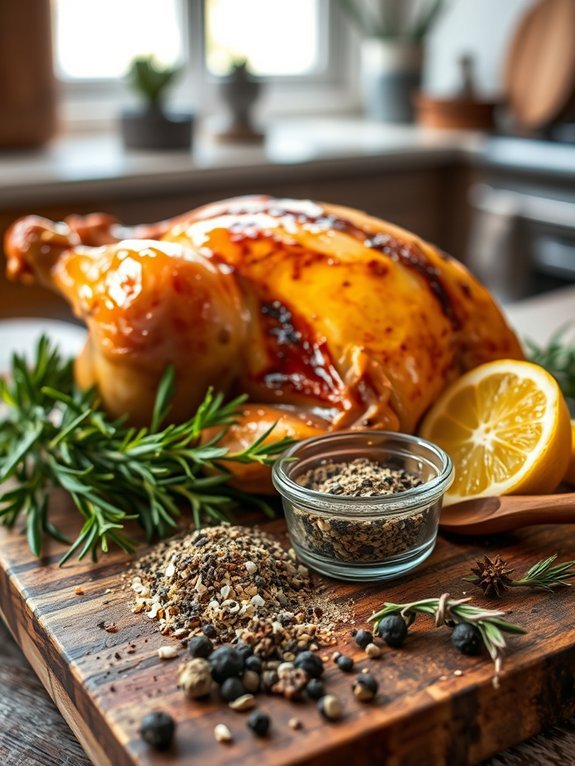
Seasoning is a fundamental aspect of cooking that can elevate a dish from bland to extraordinary. Mastering the art of seasoning requires understanding how different herbs, spices, and salt can influence the flavor profile of your meals. The key is to enhance rather than overpower the natural tastes of your ingredients.
A well-seasoned dish will bring out the best in each component, creating a harmonious balance that delights the palate.
To illustrate the principle of effective seasoning, we’ll create a simple yet delicious roasted chicken with a herb seasoning blend. This dish will serve as a perfect canvas to master the nuances of salt, acidity, and spice. By following this recipe, you’ll learn how to layer flavors and make informed seasoning decisions that will set the stage for an unforgettable meal.
- 1 whole chicken (about 4-5 lbs)
- 4 tablespoons olive oil
- 1 tablespoon sea salt
- 1 tablespoon freshly cracked black pepper
- 2 teaspoons garlic powder
- 2 teaspoons onion powder
- 1 tablespoon fresh rosemary, chopped (or 1 teaspoon dried)
- 1 tablespoon fresh thyme, chopped (or 1 teaspoon dried)
- 1 lemon, halved
- Fresh herbs for garnish (optional)
Preheat your oven to 425°F (220°C). Pat the whole chicken dry with paper towels, ensuring to remove excess moisture. In a small bowl, mix the olive oil, sea salt, black pepper, garlic powder, onion powder, chopped rosemary, and thyme.
Rub this seasoning mixture all over the chicken, making sure to get under the skin and into the cavity. Squeeze the lemon halves inside the cavity for extra flavor, and then place them inside as well. Roast the chicken in the preheated oven for about 1 hour and 20 minutes or until the internal temperature reaches 165°F (74°C).
Let it rest for about 10 minutes before carving.
For best results, be mindful of the balance between different seasonings. Start with a moderate amount of salt and build up as needed; you can always add more, but you can’t take it away once it’s in.
Also, keep in mind that different herbs have varying strengths; dried herbs offer concentrated flavors while fresh herbs provide a vibrant touch. Taste your dish at various stages of the cooking process to adjust seasoning, and remember that acidity from lemon or vinegar can enhance flavors immensely, so don’t be afraid to experiment!
Recommended Items
Discover our favorite picks to elevate your cooking experience—happy exploring!
Balance Acidity and Sweetness
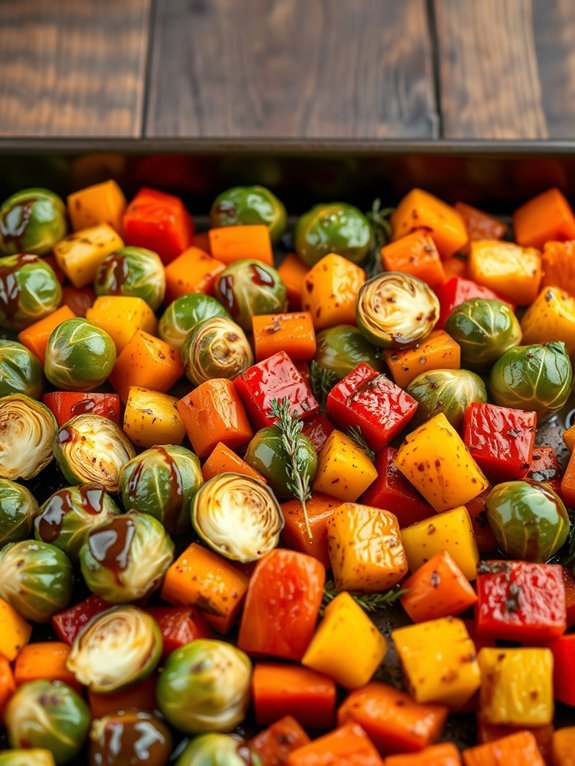
To achieve a harmonious balance of acidity and sweetness in a dish, consider making a classic balsamic-glazed roasted vegetable medley. This dish not only celebrates the vibrant flavors of fresh vegetables but also elevates them with a sweet and tangy balsamic reduction. The bursting flavors of sweet carrots and bell peppers offer a delightful contrast to the slightly tart and pungent notes of balsamic vinegar, creating a well-rounded and appetizing side that pairs perfectly with a variety of main courses.
Roasting vegetables enhances their natural sweetness, allowing the sugars to caramelize and develop deeper flavors. By coating the vegetables in a mixture of balsamic vinegar and honey prior to roasting, you’ll create a delicious glaze that brings out the best in each ingredient. This recipe is straightforward and perfect for both novice cooks and seasoned chefs looking to refine their palate.
- 2 cups of Brussels sprouts, halved
- 1 cup of carrots, sliced
- 1 cup of red bell pepper, chopped
- 1 cup of yellow squash, sliced
- 1/4 cup of balsamic vinegar
- 2 tablespoons of honey
- 2 tablespoons of olive oil
- Salt and pepper to taste
- Fresh herbs for garnish (optional)
Preheat your oven to 400°F (200°C). In a large mixing bowl, combine the Brussels sprouts, carrots, bell pepper, and yellow squash. In a separate small bowl, whisk together the balsamic vinegar, honey, olive oil, salt, and pepper. Pour the balsamic mixture over the vegetables and toss until they’re evenly coated.
Spread the vegetables in a single layer on a baking sheet and roast for 25-30 minutes, or until they’re tender and caramelized, tossing halfway through cooking for even browning.
When making this dish, feel free to customize it with your favorite vegetables or additional seasonings. You can adjust the amount of honey to enhance or reduce the sweetness according to your taste, and a sprinkle of red pepper flakes can add a hint of spiciness to balance the sweetness and acidity even further.
This way, you’ll create a dish that not only looks beautiful but also delights the palate with its intricate flavor profile.
Incorporate Umami-Rich Ingredients
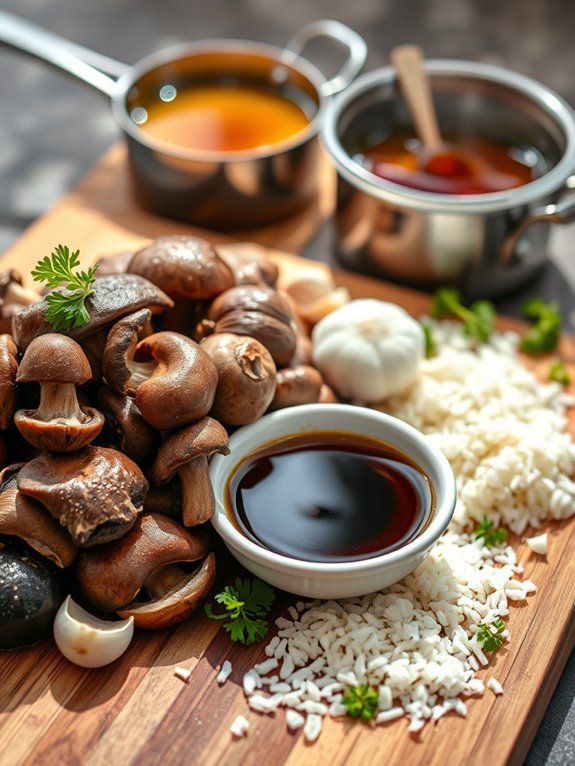
Umami is often referred to as the fifth taste, characterized by a savory and rich flavor that can elevate any dish. Incorporating umami-rich ingredients into your cooking can greatly enhance the overall flavor profile. One delightful way to bring out umami in your meals is by making a delicious Mushroom and Soy Sauce Risotto. This dish combines the earthiness of mushrooms with the depth of soy sauce, creating a creamy, satisfying meal that packs a flavorful punch.
Cooking risotto may seem intimidating, but it’s quite simple once you get the hang of it. The technique involves slowly adding broth to the rice, allowing it to absorb the liquid gradually while stirring frequently. This creates a creamy texture that’s perfectly complemented by the umami undertones of the mushrooms and soy sauce. Prepare to impress your family and friends with this dish that’s not only delicious but also rich in flavor.
- 2 cups Arborio rice
- 4 cups vegetable or chicken broth
- 1 cup white wine (optional)
- 2 cups assorted mushrooms (such as shiitake, cremini, or portobello), sliced
- 1 small onion, finely chopped
- 2 cloves garlic, minced
- 1 tablespoon soy sauce
- 2 tablespoons olive oil
- 1 tablespoon butter
- Salt and pepper to taste
- Fresh parsley, chopped (for garnish)
- Grated Parmesan cheese (optional)
In a large pan over medium heat, add the olive oil and butter. Once melted, sauté the onion and garlic until they’re translucent. Add the sliced mushrooms and cook until they soften and release their juices. Stir in the Arborio rice and cook for another minute to toast the rice.
Gradually add the white wine (if using) and let it simmer until absorbed. Then, add the broth one ladle at a time, stirring continuously until the liquid is absorbed before adding more. This process should take about 20 minutes. Once the rice is al dente, stir in the soy sauce, and season with salt and pepper.
Optional: fold in grated Parmesan cheese for an extra creamy finish and garnish with fresh parsley.
When preparing this risotto, make sure to choose high-quality mushrooms, as they play a critical role in contributing to the umami flavor. Don’t rush the cooking process; allowing the rice to absorb the broth slowly helps achieve the ideal creamy texture.
Also, feel free to experiment with different umami ingredients like miso paste, nutritional yeast, or sun-dried tomatoes to give your dish a unique twist. Enjoy your flavorful creation!
Experiment With Marinades and Rubs
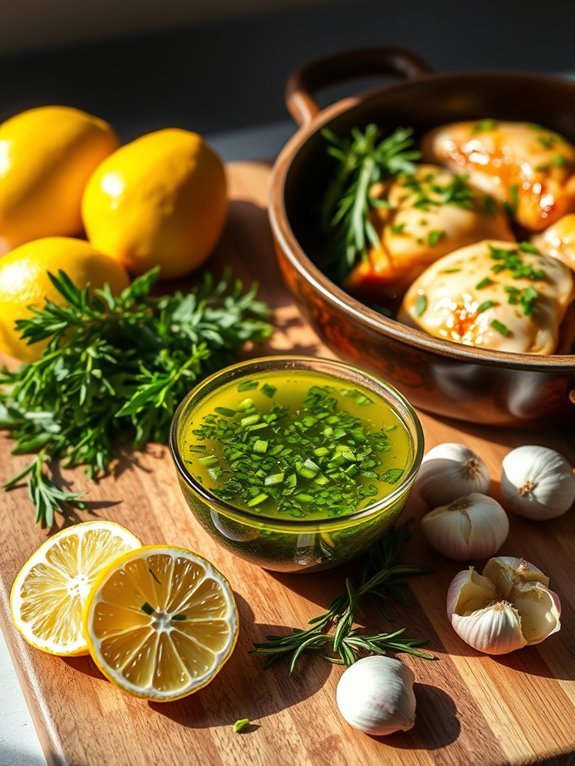
Marinades and rubs are fabulous ways to infuse your dishes with layers of rich, complex flavor. They allow you to experiment with various spices, oils, and acids, transforming even the simplest of proteins into a culinary delight. Whether you’re grilling chicken, beef, pork, or vegetables, the right combination of ingredients can elevate your meals from mundane to extraordinary. One popular choice among chefs is a zesty citrus herb marinade, which imparts a rejuvenating taste that pairs well with many dishes.
In addition to the vibrant flavors offered by marinades, dry rubs can also enhance your cooking repertoire. They provide a concentrated punch of flavor and create a beautiful crust on grilled or roasted meats. A well-balanced dry rub can quickly become your secret weapon for impressing guests at your next cookout or dinner party. By combining various spices, you can tailor your seasoning to suit your palate and create unique flavor profiles.
- 1/4 cup olive oil
- 1/4 cup fresh lemon juice
- 2 cloves garlic, minced
- 1 tablespoon fresh thyme, chopped
- 1 tablespoon fresh rosemary, chopped
- 1 teaspoon salt
- 1 teaspoon black pepper
- 1 teaspoon smoked paprika
- 2 pounds chicken thighs or breasts
In a bowl, whisk together the olive oil, lemon juice, minced garlic, thyme, rosemary, salt, pepper, and smoked paprika until well combined.
Place the chicken in a resealable plastic bag or a shallow dish and pour the marinade over it, ensuring all pieces are coated well. Seal or cover and refrigerate for at least 1 hour, allowing the flavors to meld.
Preheat your grill to medium heat and remove the chicken from the marinade, discarding any leftover marinade. Cook the chicken for approximately 6-8 minutes per side or until fully cooked, reaching an internal temperature of 165°F, and serve immediately.
When using marinades, remember that the longer you let the meat soak, the more flavor it will absorb. However, don’t marinate proteins like chicken for more than 24 hours, as the acid in the marinade can begin to break down the proteins, resulting in a mushy texture.
For additional flavor enhancement, consider adding citrus zest to your marinades or using different herbs and spices that complement the main ingredient you choose. Always balance acidic and savory components for the perfect flavor harmony!
Enhance Flavor With Cooking Techniques
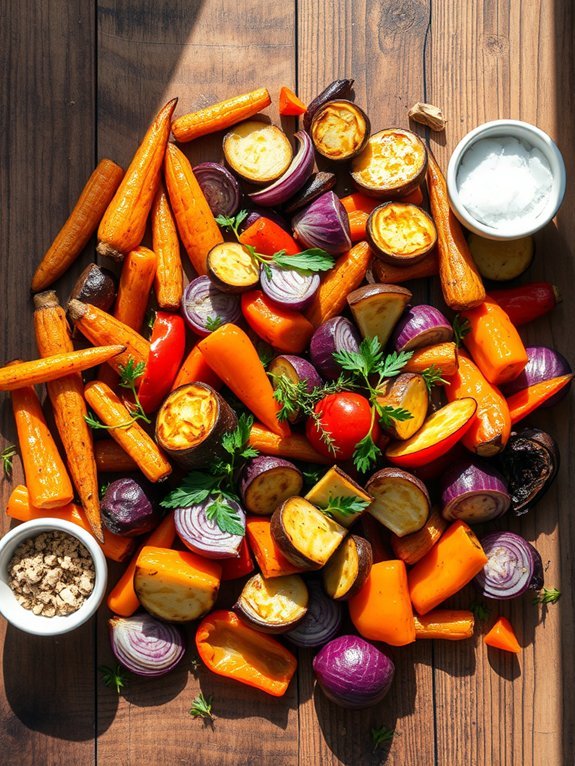
Cooking techniques can elevate your culinary creations, taking them from ordinary to extraordinary. One such technique is roasting, which enhances the natural flavors of ingredients through caramelization and browning. This method not only adds depth to the overall taste but also brings out a delightful texture.
Roasting works wonders for vegetables and proteins alike, so let’s explore a simple yet flavorful roasted vegetable medley that’s perfect as a side dish or as a topping for grains and salads.
To begin, selecting the right vegetables is essential for achieving a colorful and flavorful dish. You can experiment with seasonal produce such as carrots, bell peppers, broccoli, and zucchini to create a vibrant array of flavors and textures. Adding fresh herbs and a dash of seasoning will further enhance the taste, making this roasted vegetable medley a delicious accompaniment to any meal.
- 2 medium carrots, peeled and chopped
- 1 bell pepper (any color), diced
- 1 zucchini, sliced
- 1 small red onion, cut into wedges
- 2 tablespoons olive oil
- 1 teaspoon garlic powder
- 1 teaspoon dried thyme
- Salt and pepper, to taste
- Fresh parsley, chopped (for garnish)
Preheat your oven to 425°F (220°C). In a large bowl, combine the chopped carrots, diced bell pepper, sliced zucchini, and red onion. Drizzle the olive oil over the vegetables and sprinkle with garlic powder, dried thyme, salt, and pepper. Toss everything together until the vegetables are well coated.
Transfer the mixture to a baking sheet and spread it out in a single layer. Roast in the preheated oven for about 25-30 minutes or until the vegetables are tender and caramelized, stirring halfway through for even cooking.
When roasting vegetables, make certain to cut them into uniform sizes for even cooking. It’s also beneficial to leave some space between the pieces on the baking sheet to guarantee they roast properly instead of steaming.
Feel free to experiment with different herbs and spices based on your personal preference, and consider adding a splash of balsamic vinegar or lemon juice for an extra zing before serving.
Utilize High-Quality Fats
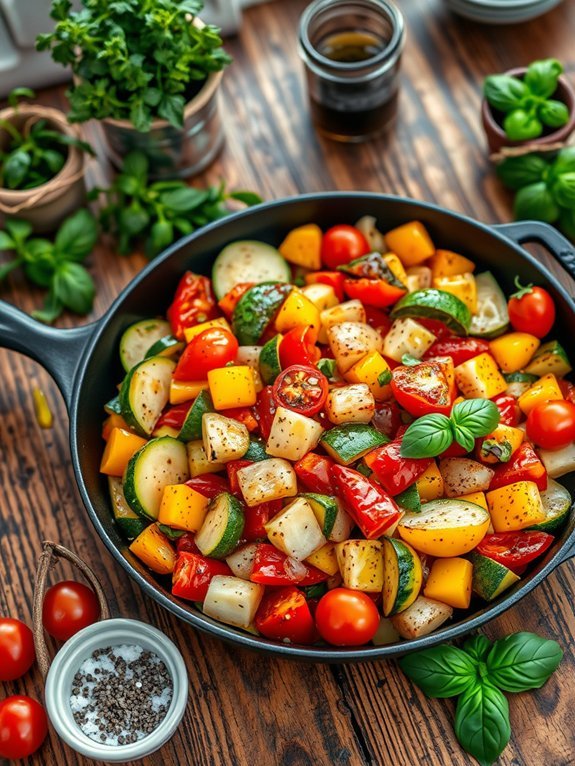
When it comes to enhancing the flavor of your dishes, selecting high-quality fats can amplify taste and enrich mouthfeel. Fats serve as a carrier for aromatic compounds, making them instrumental in cooking, whether you’re roasting vegetables, searing proteins, or creating sauces. Utilizing oils and fats with distinctive flavors, such as extra virgin olive oil, artisanal butters, or animal fats like duck fat, can elevate a simple dish into a memorable culinary experience.
This recipe showcases the use of high-quality olive oil to create a rich and flavorful sautéed vegetable medley. The combination of seasonal vegetables, enhanced with fresh herbs and a sprinkling of salt, allows the natural flavors to shine while the oil adds depth. This dish serves well as a side, or you can toss it with pasta or grains for a satisfying main course.
Ingredients:
- 2 tablespoons high-quality extra virgin olive oil
- 1 zucchini, sliced
- 1 red bell pepper, diced
- 1 yellow onion, chopped
- 1 cup cherry tomatoes, halved
- 2 cloves garlic, minced
- Salt and pepper, to taste
- Fresh basil, chiffonade for garnish
Heat the olive oil in a large skillet over medium heat. Add the chopped onion and garlic, sautéing until fragrant and translucent. Next, toss in the zucchini and bell pepper, stirring frequently until they begin to soften.
Finally, add the cherry tomatoes and continue cooking until the veggies are tender but still vibrant. Season with salt and pepper, and remove from heat. Garnish with fresh basil before serving.
When using high-quality fats, be aware of their smoke points. Extra virgin olive oil, while flavorful, has a lower smoke point compared to refined oils.
If you want a richer flavor without burning the oil, consider finishing your dish with a drizzle of high-quality oil at the end of cooking. This keeps the flavor intact while still enhancing the overall taste.
Enjoy experimenting with different fats to find the right combination for your favorite dishes!
Don’t Forget About Texture
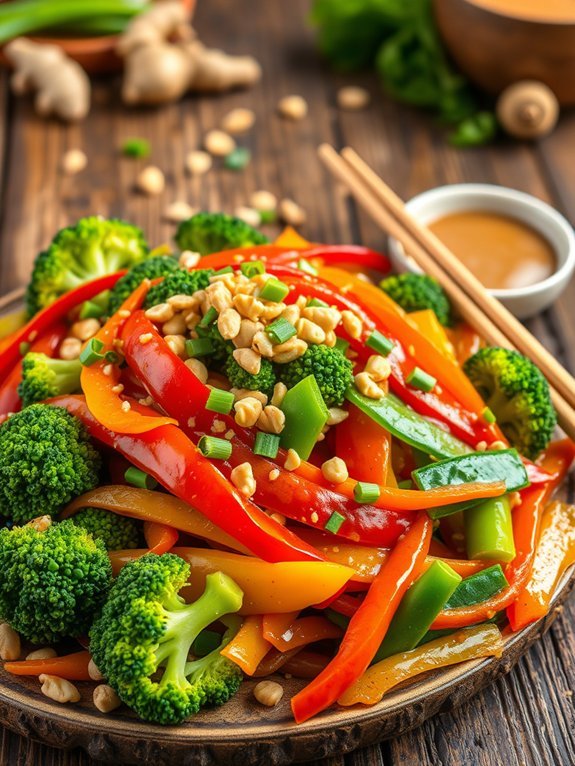
When it comes to enhancing food flavor, texture plays an equally critical role alongside taste. A dish that embodies a delightful crunch or a creamy, smooth consistency can elevate the entire dining experience.
For instance, a simple yet delicious vegetable stir-fry can offer a medley of textures: a crisp bite from fresh bell peppers, a tender chew from broccoli, and a velvety finish from a rich sauce. By focusing on both texture and flavor, you can create dishes that not only excite the taste buds but also provide an enjoyable mouthfeel.
This recipe for a Vegetable Stir-Fry with a Peanut Sauce showcases the importance of texture. Each vegetable brings its unique character to the dish, while the sauce adds a luscious creaminess that binds everything together. Pair this stir-fry with your favorite protein or serve it on a bed of fluffy rice for a well-rounded meal that packs both flavor and a satisfying variety of textures.
Ingredients:
- 1 cup broccoli florets
- 1 cup bell peppers, sliced (any color)
- 1 cup snap peas
- 1 medium carrot, julienned
- 2 tablespoons vegetable oil
- 3 cloves garlic, minced
- 1 inch ginger, grated
- ¼ cup peanut butter
- 2 tablespoons soy sauce
- 1 tablespoon honey or maple syrup
- 1 tablespoon rice vinegar
- Salt and pepper to taste
- Chopped peanuts and scallions for garnish
In a large skillet or wok, heat the vegetable oil over medium-high heat. Add the garlic and ginger, stirring for about 30 seconds until fragrant.
Then, add the broccoli, bell peppers, snap peas, and carrot, and stir-fry for 3-5 minutes until the vegetables are tender-crisp.
Meanwhile, whisk together the peanut butter, soy sauce, honey or maple syrup, rice vinegar, and a bit of water to achieve a pourable consistency. Combine the sauce with the veggies in the skillet, tossing everything to coat evenly. Season with salt and pepper to taste.
Serve hot, garnished with chopped peanuts and scallions.
For the best texture, aim to cook your vegetables just until they’re tender yet still crisp. Avoid overcrowding the pan; if necessary, cook in batches to maintain even cooking and avoid steaming the vegetables.
Don’t hesitate to customize the stir-fry by incorporating different vegetables or proteins like tofu or chicken, keeping their respective cooking times in mind. Enjoy experimenting with various combinations to find your perfect blend of textures and flavors!
Flavor Enhancement Techniques
Layer Flavors as You Cook
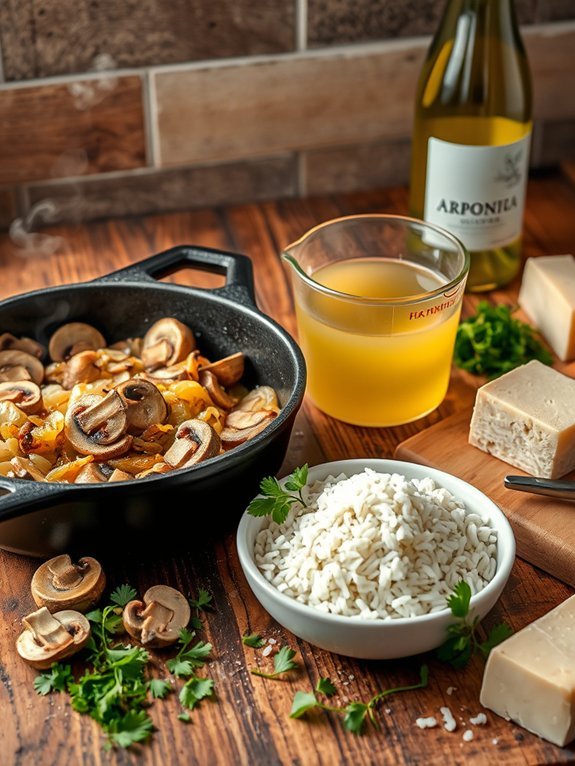
Layering flavors as you cook is an essential technique that can elevate any dish from ordinary to extraordinary. By adding ingredients at different stages of the cooking process, you allow the flavors to build upon each other, creating a harmonious and complex taste profile. The following recipe showcases this technique with a classic dish – a savory mushroom risotto, which benefits greatly from the gradual infusion of flavors.
To start, the key to a perfect risotto lies in the quality of your ingredients and your attention to timing. Utilizing fresh, seasonal mushrooms adds depth, while carefully sautéing onions and garlic provides a fragrant base. The gradual addition of broth, along with the opportunity to absorb and release flavors, is what makes risotto a beloved comfort dish that can be enjoyed any time of year.
Ingredients:
- 1 cup Arborio rice
- 4 cups low-sodium vegetable or chicken broth
- 1 cup sliced fresh mushrooms (cremini, shiitake, or button)
- 1 small onion, finely chopped
- 2 cloves garlic, minced
- 1/2 cup dry white wine (optional)
- 1/2 cup grated Parmesan cheese
- 2 tablespoons olive oil
- 2 tablespoons unsalted butter
- Salt and pepper to taste
- Fresh parsley, chopped for garnish
Heat the olive oil and 1 tablespoon of butter in a large skillet over medium heat. Add the chopped onion and garlic, sautéing until softened and translucent.
Then, add the sliced mushrooms, cooking until they release their moisture and become tender. Stir in the Arborio rice, allowing it to toast for about 2 minutes before adding the white wine (if using).
Ladle in the warm broth one cup at a time, stirring constantly and allowing the rice to absorb the liquid before adding more. Continue this process for about 18-20 minutes until the risotto is creamy and the rice is al dente.
Finish with the remaining butter and Parmesan cheese, stirring until well combined.
For an extra layer of flavor, consider adding a splash of lemon juice or a sprinkle of zest just before serving. This will brighten the dish and balance the richness of the cheese and butter.
Additionally, feel free to experiment with herbs such as thyme or rosemary during the cooking process for added aroma. Finally, remember to taste your risotto as you go, adjusting the seasoning as necessary to confirm a well-balanced dish.
Finish With Flavor Boosters
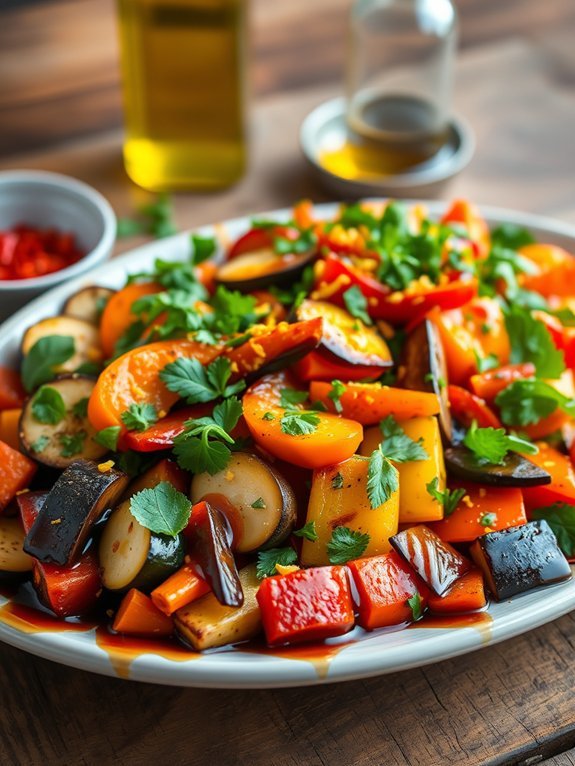
To truly elevate your meal, finishing with flavor boosters can make all the difference. These last-minute additions can transform a simple dish into a gourmet experience. These enhancements add depth and enhance the overall taste, offering a balanced combination of acidity, freshness, and umami.
Whether you’re working with a savory dish or a sweet dessert, the right finishing touches can result in a complex flavor profile that tantalizes the taste buds. This recipe focuses on a delightful roasted vegetable medley, perfect as a side or main dish. By incorporating flavor boosters at the end, you can introduce bright acidity and herbaceous notes that bring the entire dish to life.
Fresh herbs, zesty citrus, and premium oils create a symphony of tastes that are hard to resist. Prepare for a roast that dazzles with every bite, sealed with the final touch of brilliance.
Ingredients:
- 2 cups of mixed seasonal vegetables (zucchini, bell peppers, carrots, and red onions)
- 2 tablespoons olive oil
- Salt and pepper to taste
- 1 tablespoon balsamic vinegar
- Zest of 1 lemon
- Fresh herbs (basil, parsley, or thyme), chopped
- Red pepper flakes (optional)
Toss the mixed vegetables in olive oil, salt, and pepper, then spread them out evenly on a baking sheet. Roast in a preheated oven at 425°F (220°C) for about 25-30 minutes, or until they’re tender and slightly browned.
Remove the vegetables from the oven, drizzle them with balsamic vinegar, and sprinkle with lemon zest and fresh herbs. If desired, add a pinch of red pepper flakes for a touch of heat.
When roasting your vegetables, don’t overcrowd the baking sheet, as this can result in steaming rather than roasting. For a deeper flavor, consider experimenting with different types of oils, such as garlic-infused oil or avocado oil.
Additionally, giving the vegetables time to roast undisturbed will enhance their caramelization, providing a richer flavor. Finally, feel free to customize the vegetables and herbs based on what’s in season or available, bringing your personal touch to this dish.

